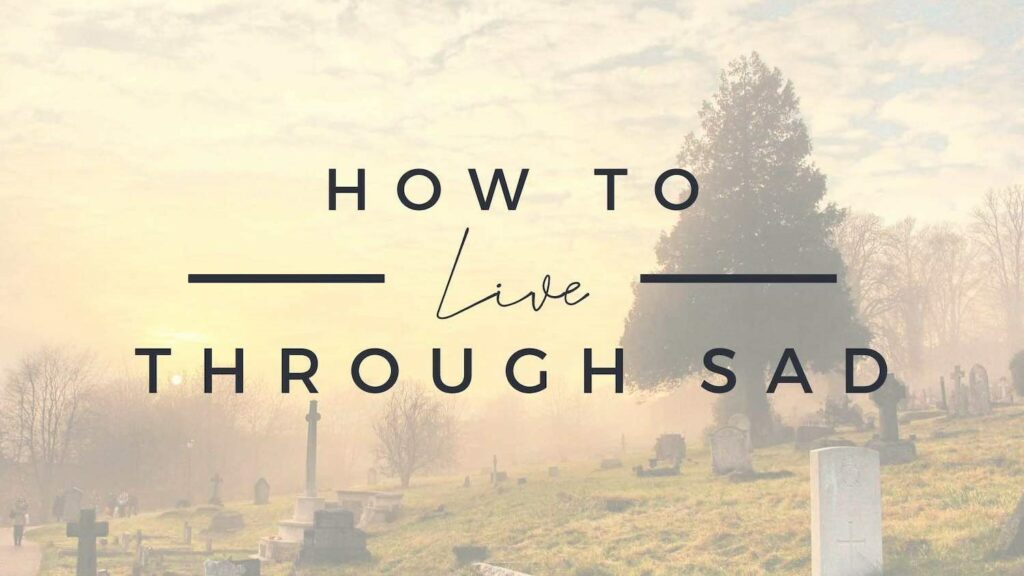After several months of waiting, the time came to approve the tombstone for my husband’s unmarked grave. I had attempted to prepare my emotions for this cemetery trip and it was going to be strictly business, no crying at the graveside for me. But as grief usually goes, I was met with a surprise at the cemetery when I was informed that the marker had been placed on the grave at the request of another family member. Feeling violated, I was launched into a setting I was completely unprepared for—a very emotional graveside visit!
Even before I knew I was going to have to actually visit the grave, I felt myself saying, “I’m not going to cry, I’m not going to cry, I’m NOT going to cry!” Not that I believed crying was inappropriate I just secretly feared this necessary and unavoidable emotion of sad! And now here I was, walking through a graveyard in search for my husband’s burial spot fighting an intense inner battle. There it was, Robert “Bobby” J. Apon – etched in stone. Now there was no denying it, he was dead.
My first response upon seeing the marking and the reminder of his suicide death, “Bobby, you didn’t have to be here!” Mixed emotions followed as I rapidly began scanning the entire cemetery—no one is here! So, why do they mark graves anyway? Why do people put flowers on a piece of land where that person is NOT?! My husband always said, “When I die, just bury me in an old pine box, because I won’t be there.”
For some, a visit to the grave is as common as a trip to the grocery story. One widow told me the grave was her safe place for lament on significant dates, holidays, and tender moments of reflection. For others, it will look more like the story above, all wrapped in millions of complex emotions and thoughts! There is no right or wrong way to grieve nor is there a proper policy for graveyard gatherings.
What about children? Should they go to the grave?
Personally, I kept my little ones from going in order to prevent confusion over their daddy’s existence, life after death can be a confusing concept for even the oldest of us! I wanted to make sure they could understand that there is an eternal destiny for all and that life continues even beyond the grave, before I took them to a place that so clearly points to that harsh reality. Death of daddy presents a necessary and amazing opportunity to teach children about heaven and eternal life. However, great caution and timing must be considered for grieving children who just want normal! Sadly, all daddies don’t go to heaven and the gift of salvation must be about a relationship with Jesus and not a ticket to restoration with daddy.
On the drive home from my business-meeting gone graveside-encounter shared above, I felt myself experiencing the need to cry for the first time in three months, but I was determined to hold it in. In that moment God gently whispered to my heart, “It’s okay if you cry.” With that holy permission, I began to cry—really cry. The kind of cry that’s not only on the outside, but the kind that’s also deep within the soul! It hurt oh so bad! As the tears flowed, I saw a picture of a clay ball being molded by a potter. Talking to God, I shared with Him that my heart was like that clay ball taking an emotional beating—punched, twisted, and mashed as He shaped my story for His glory. Our hearts are in a constant state of change—molding—unless we allow them to become hard, but tears from brokenness and suffering are used by God to keep them soft. For a season the emotion of sad was our constant reality, and I had to be okay with that, after all it would just be for a season and God promised to keep me and my family in the process.
If you find yourself in this stage of the grief process, you can’t go over it, under it, or even around it. You know, you have to go through it! God calls us and promises to guide us through sad.
How to live through sad:
- Know that it’s okay—more than okay to be sad!
- Bottled up or suppressed sad may create physical problems or bubble up in other ways—be aware of this and share it with someone.
- Understand that it’s normal for tears to accompany this pain even if your grief is tearless (flowing only on the inside of the heart). Give yourself permission to cry. It will bring healing and keep your heart soft.
- Share your sorrow with a trusted friend. God places encouragers in our lives for this very purpose. They know how to sit in silence, their presence is powerful, and they are gifted at bringing needed comfort.
- Give grace to those who don’t understand or want to fix your sorrow. Without understanding, compassion is limited. Even Scripture speaks to unexperienced compassion, “Like one who takes off a garment on a cold day, or like vinegar on soda, is he who sings songs to a troubled heart.” Use kind words when the opportunity arises to help them understand.
- Sad won’t last forever, and flickers of joy may surprise you during great sorrow. Joy and sorrow often run on the same track. The relief of a moment of delight gives strength to endure the pain. It’s okay to experience happy in the season of sad.






